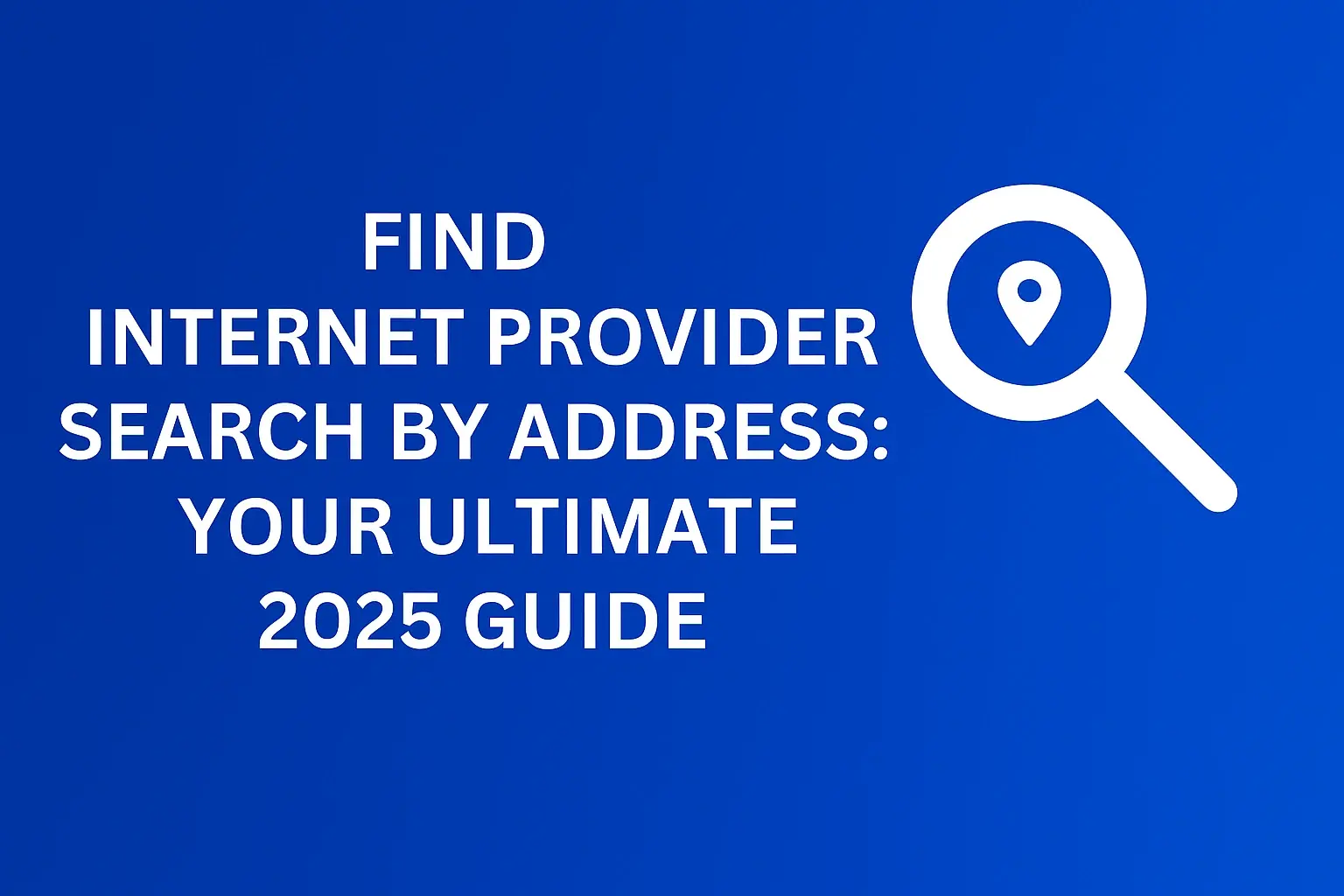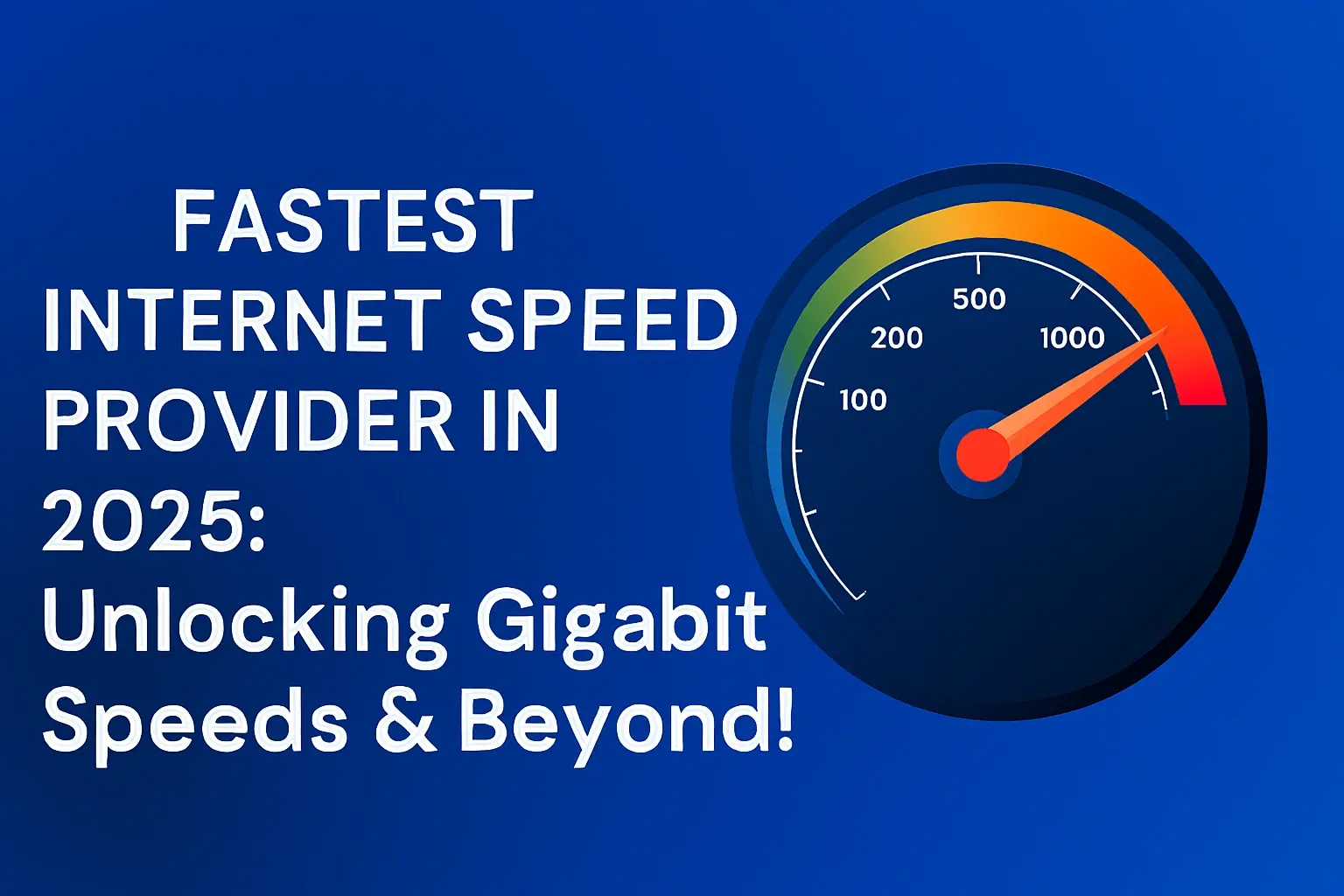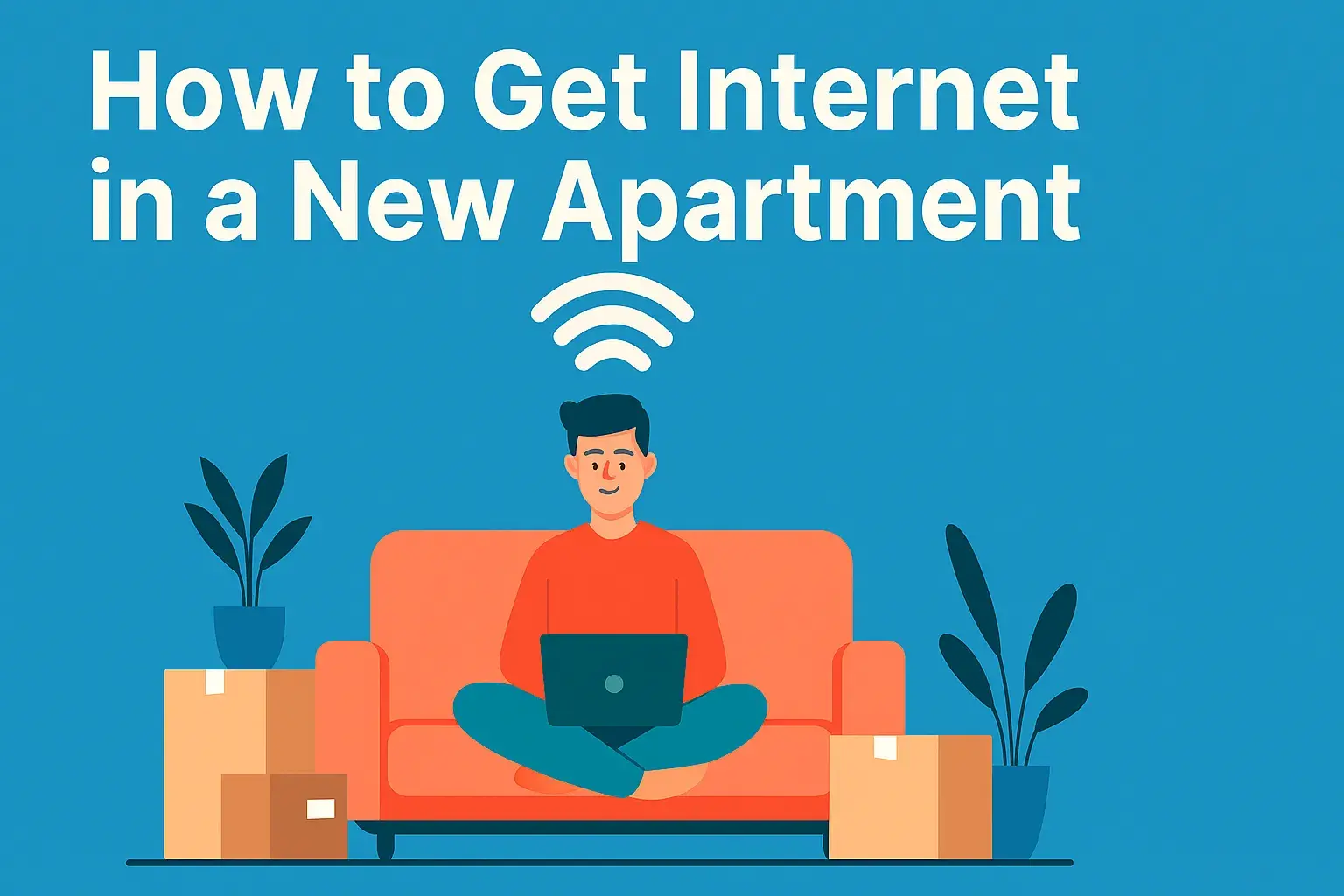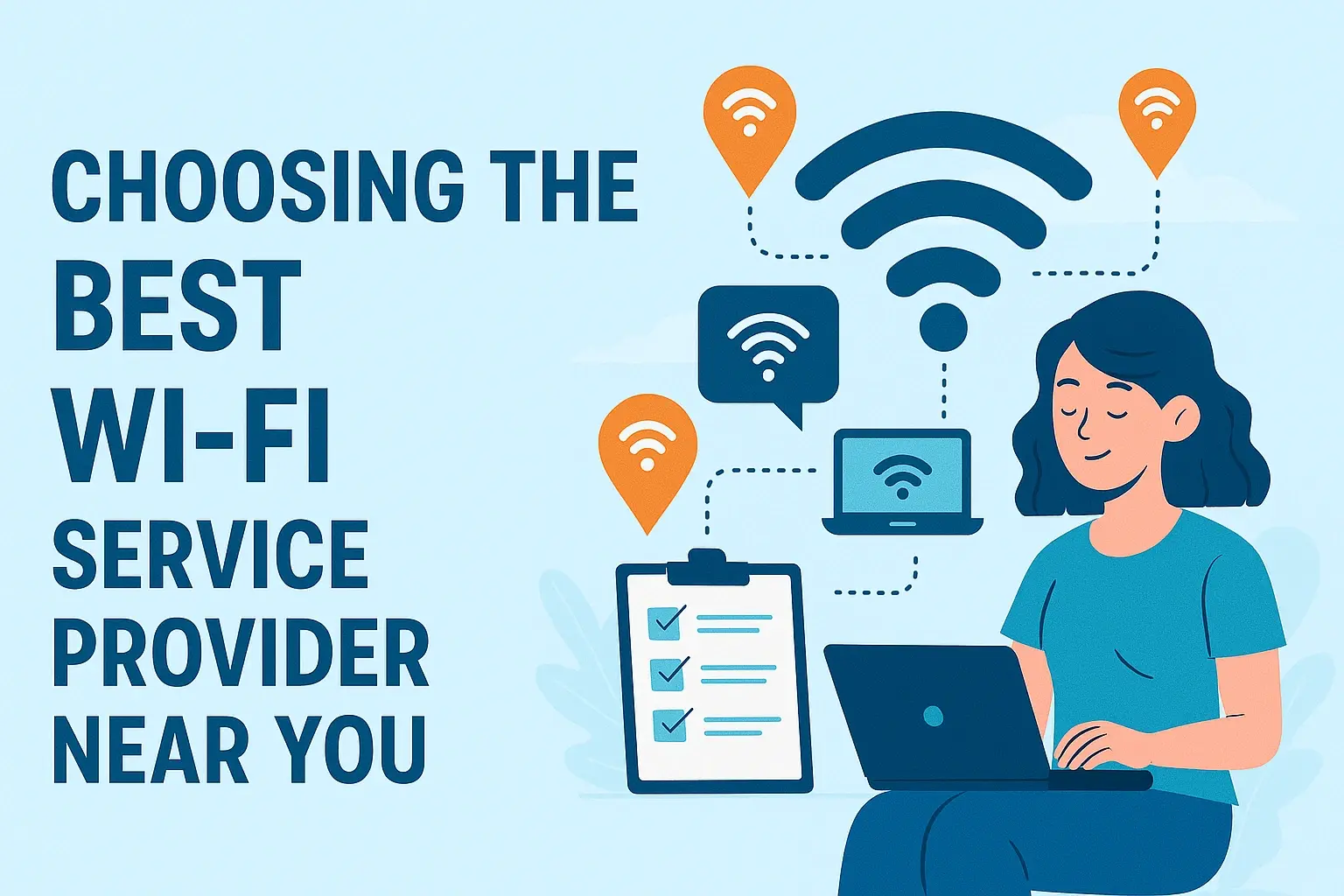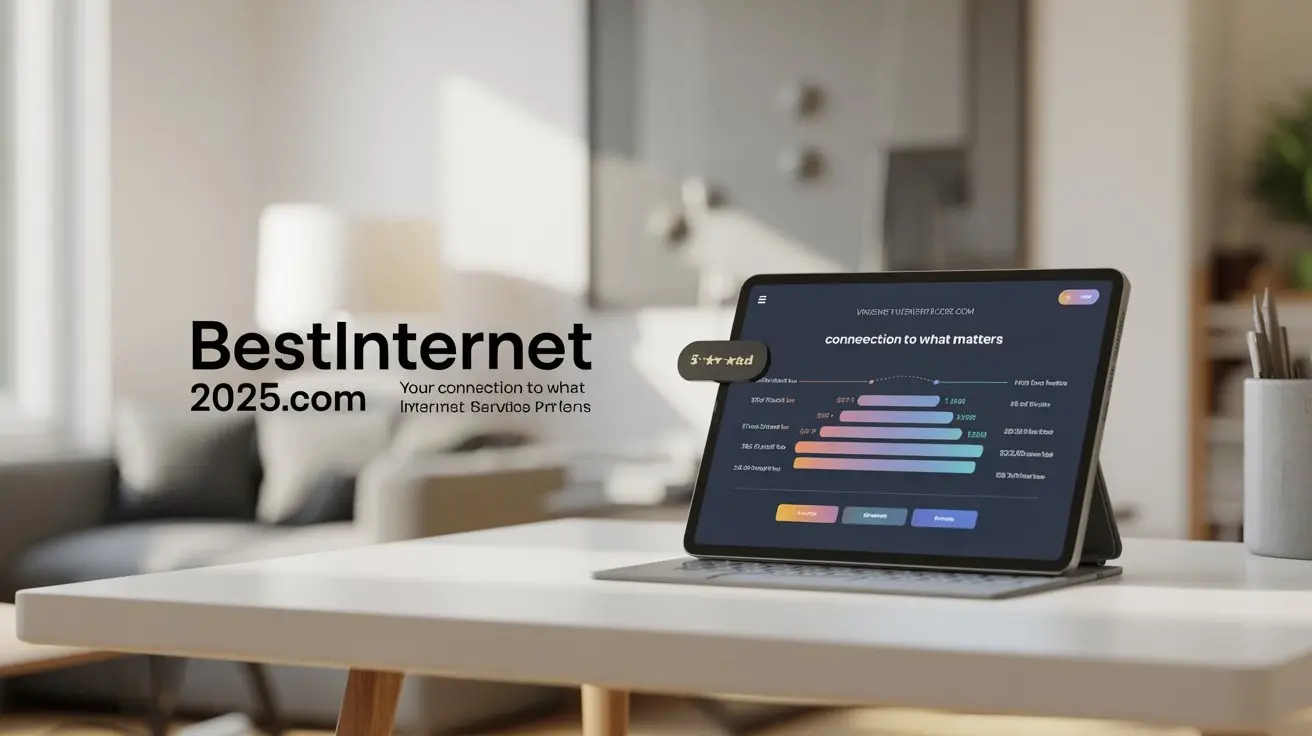Choosing Between Internet Technologies for Fastest Speeds

Navigating the complex landscape of internet technologies to achieve the fastest speeds can be daunting. This guide breaks down the leading contenders, offering clear comparisons and actionable advice to help you make an informed decision for your home or business in 2025.
Understanding Internet Speeds: The Basics
Before diving into the technologies, it's crucial to understand what "internet speed" actually means. We typically talk about two main metrics: download speed and upload speed, both measured in megabits per second (Mbps) or gigabits per second (Gbps). Download speed dictates how quickly you can receive data from the internet – essential for streaming videos, browsing websites, and downloading files. Upload speed, on the other hand, determines how fast you can send data to the internet – critical for video conferencing, uploading large files, and online gaming.
Latency, often referred to as ping, is another vital factor, especially for real-time applications. It measures the time it takes for data to travel from your device to a server and back. Lower latency means a more responsive internet connection, crucial for gaming and lag-free video calls. In 2025, the demand for higher speeds and lower latency is driven by increasingly data-intensive applications, cloud computing, and the proliferation of smart home devices.
Fiber-Optic Internet: The Speed King
Fiber-optic internet is widely considered the gold standard for internet speed and reliability. It utilizes thin strands of glass or plastic to transmit data as pulses of light, allowing for incredibly high speeds and minimal signal degradation over long distances. Unlike traditional copper wires used in cable and DSL, light signals are not susceptible to electromagnetic interference, ensuring a stable and consistent connection.
Key characteristics of Fiber-Optic Internet:
- Speeds: Download and upload speeds can reach up to 10 Gbps, with symmetrical speeds (download and upload speeds being the same) being a common offering. This is significantly faster than other technologies.
- Latency: Extremely low latency, often in the single-digit milliseconds, making it ideal for gaming, virtual reality, and other real-time applications.
- Reliability: Less prone to weather interference or signal degradation compared to other methods.
- Availability: Still the least available technology, primarily concentrated in urban and suburban areas where providers have invested heavily in infrastructure. Deployment is ongoing, but it remains a significant barrier for many.
- Cost: Generally the most expensive option, reflecting the advanced infrastructure and superior performance.
2025 Outlook for Fiber: The expansion of fiber networks continues to be a priority for governments and private companies globally. Initiatives to bridge the digital divide are accelerating fiber deployment into underserved rural areas. Expect to see more providers offering multi-gigabit plans, pushing the boundaries of what's possible for home and business internet. According to recent industry reports, fiber penetration is projected to exceed 40% of broadband connections in developed nations by the end of 2025.
Cable Internet: The Widely Available Powerhouse
Cable internet is delivered through the same coaxial cables that bring cable television to your home. It’s a popular choice due to its widespread availability and generally faster speeds compared to DSL. Cable internet uses a shared bandwidth model, meaning that the speed you experience can sometimes be affected by the number of users in your neighborhood online simultaneously.
Key characteristics of Cable Internet:
- Speeds: Download speeds typically range from 100 Mbps to over 1 Gbps. Upload speeds are usually significantly lower than download speeds, often ranging from 10 Mbps to 50 Mbps.
- Latency: Latency is moderate, generally higher than fiber but lower than satellite. It's usually sufficient for most online activities, including streaming and casual gaming.
- Reliability: Generally reliable, though it can be subject to congestion during peak usage hours in densely populated areas.
- Availability: One of the most widely available broadband technologies, covering a vast majority of urban and suburban areas.
- Cost: Falls in the mid-range, offering a good balance between performance and price for many consumers.
2025 Outlook for Cable: Cable providers are continuously upgrading their networks to DOCSIS (Data Over Cable Service Interface Specification) standards, enabling higher speeds and improved performance. DOCSIS 4.0, which is becoming more prevalent, allows for symmetrical multi-gigabit speeds, closing the gap with fiber in some aspects. However, the shared nature of the network will always be a limiting factor for true gigabit-level symmetrical performance compared to fiber. Expect cable to remain a dominant force, especially in areas where fiber deployment is slower.
DSL Internet: The Reliable, Though Slower, Option
Digital Subscriber Line (DSL) internet uses existing telephone lines to transmit data. It’s a mature technology that offers a stable connection but is generally slower than cable or fiber. The speed of DSL is heavily dependent on the distance from your home to the local telephone company's central office (CO) – the further away you are, the slower the speeds.
Key characteristics of DSL Internet:
- Speeds: Download speeds typically range from 5 Mbps to 100 Mbps, with upload speeds being considerably lower. VDSL (Very-high-bit-rate DSL) offers higher speeds, sometimes approaching 100 Mbps download.
- Latency: Latency is generally higher than cable and fiber, which can impact real-time applications.
- Reliability: Known for its stability and consistency, as it’s less affected by neighborhood congestion.
- Availability: Widely available in most areas where traditional phone service exists, making it a fallback option in many rural or less developed regions.
- Cost: Typically the most affordable option, making it attractive for budget-conscious consumers or those with basic internet needs.
2025 Outlook for DSL: While DSL is being phased out in favor of faster technologies in many areas, it continues to serve as a crucial connectivity option for millions, especially in rural or underserved communities. Providers are focusing on VDSL and G.fast technologies to squeeze more performance out of existing copper lines. However, its limitations in speed and latency mean it's unlikely to be the primary choice for users demanding high performance in 2025.
5G Home Internet: The Wireless Challenger
5G home internet leverages the latest generation of cellular technology to provide broadband service wirelessly to your home. It uses radio waves transmitted from nearby cell towers to connect your router. This technology offers a compelling alternative to traditional wired connections, especially in areas where wired infrastructure is lacking or outdated.
Key characteristics of 5G Home Internet:
- Speeds: Speeds can vary widely, from 50 Mbps to over 1 Gbps, depending on signal strength, network congestion, and the specific 5G band being used (e.g., mmWave offers the highest speeds but has limited range). Download speeds are generally faster than upload speeds.
- Latency: Latency can be competitive with cable and even approach fiber in ideal conditions, though it can fluctuate more due to wireless transmission.
- Reliability: Performance is highly dependent on signal strength and proximity to cell towers. Obstructions like buildings or trees can degrade the signal.
- Availability: Rapidly expanding, particularly in urban and suburban areas where 5G cellular networks are robust. Availability is still limited in many rural locations.
- Cost: Often competitively priced, with some providers offering flat-rate plans without data caps, making it an attractive proposition.
2025 Outlook for 5G: 5G home internet is poised for significant growth in 2025. Carriers are aggressively expanding their 5G networks and marketing these services as viable alternatives to fixed-line broadband. As network density increases and device technology improves, expect more consistent speeds and better reliability. It's becoming a strong contender for users seeking speeds comparable to cable without the need for installation appointments or long-term contracts.
Satellite Internet: For Remote Locations
Satellite internet is the primary option for many individuals living in extremely rural or remote areas where terrestrial broadband options are unavailable. It works by transmitting data between your home and a satellite orbiting Earth, which then relays the signal to a ground station. This long transmission path is the cause of its inherent limitations.
Key characteristics of Satellite Internet:
- Speeds: Download speeds typically range from 25 Mbps to 100 Mbps, while upload speeds are considerably lower, often around 1 Mbps to 5 Mbps.
- Latency: High latency is the most significant drawback, often exceeding 500 milliseconds. This makes it unsuitable for real-time applications like online gaming, live video conferencing, or even smooth video streaming.
- Reliability: Can be affected by weather conditions (rain, snow, clouds) and requires a clear, unobstructed view of the sky.
- Availability: Available virtually anywhere with a clear view of the sky, making it indispensable for remote communities.
- Cost: Can be expensive, often with data caps and overage charges, though newer satellite constellations are aiming to improve this.
2025 Outlook for Satellite: The satellite internet landscape is undergoing a revolution with the launch of low-Earth orbit (LEO) satellite constellations like Starlink. These LEO satellites orbit much closer to Earth, drastically reducing latency compared to traditional geostationary satellites. While still not matching fiber or 5G for pure speed and latency, LEO satellite internet is becoming a viable option for rural users who previously had no high-speed alternatives. Expect continued improvements in speed and a reduction in latency, making it more competitive for a broader range of online activities.
Head-to-Head: Technology Comparison
To provide a clearer picture, let's compare the major internet technologies side-by-side, focusing on the metrics most important for achieving the fastest speeds and best performance in 2025.
| Feature | Fiber-Optic | Cable | DSL | 5G Home Internet | Satellite (LEO) | Satellite (GEO) |
|---|---|---|---|---|---|---|
| Max Download Speed | 10 Gbps+ | 1 Gbps+ | 100 Mbps | 1 Gbps+ (variable) | 100 Mbps+ (variable) | 100 Mbps |
| Max Upload Speed | 10 Gbps+ (Symmetrical) | 50 Mbps - 200 Mbps | 10 Mbps - 50 Mbps | 50 Mbps - 100 Mbps (variable) | 10 Mbps - 20 Mbps (variable) | 5 Mbps |
| Typical Latency | 1-10 ms | 10-30 ms | 20-50 ms | 20-50 ms (variable) | 25-50 ms (variable) | 500+ ms |
| Reliability | Very High | High | High | Moderate to High (signal dependent) | Moderate to High (signal dependent) | Moderate (weather dependent) |
| Availability | Limited (expanding) | Widespread | Widespread | Growing (urban/suburban focus) | Growing (rural/remote focus) | Global (sky view required) |
| Cost | High | Mid-High | Low | Mid | Mid-High | Mid-High |
| Best For | Power users, gamers, businesses, future-proofing | General use, streaming, gaming, most households | Basic browsing, email, light streaming, budget-conscious | Users seeking wireless alternative, good speeds | Rural users needing lower latency than GEO | Remote locations with no other options |
Key Factors for Choosing Your Internet Technology
Selecting the right internet technology involves more than just looking at the advertised speeds. Several factors should guide your decision to ensure you get the best possible performance for your needs in 2025.
1. Your Location and Availability
This is the most critical factor. No matter how fast a technology is, if it's not available in your area, it's irrelevant. Start by checking what providers and technologies are actually offered at your specific address. Websites like HighSpeedInternet.com or your local government broadband maps can be excellent resources.
2. Your Internet Usage Habits
Consider what you primarily use the internet for:
- Streaming High-Definition (HD) or 4K Video: Requires significant download bandwidth. Fiber and high-tier cable plans are ideal.
- Online Gaming: Demands low latency and consistent speeds. Fiber is superior, but high-end cable and 5G can be adequate.
- Video Conferencing and Remote Work: Needs both good download and upload speeds, plus low latency for smooth communication. Fiber is best, followed by good cable or 5G plans.
- Large File Downloads/Uploads: Requires high download and upload speeds. Fiber is unmatched here.
- Basic Browsing and Email: Can be satisfied by almost any technology, including DSL or lower-tier cable plans.
- Smart Home Devices: A growing number of connected devices can consume bandwidth and increase latency. A robust connection like fiber or high-speed cable is recommended.
3. Speed Requirements (Download vs. Upload)
As mentioned, download speed is often prioritized, but don't overlook upload speed. If you frequently upload large files, stream your own content, or engage in professional video production from home, symmetrical speeds offered by fiber become incredibly valuable. For most users, download speeds of 100-300 Mbps are sufficient for general use, but power users may need 500 Mbps to 1 Gbps or more.
4. Budget Considerations
Internet service costs vary significantly. Fiber is typically the most expensive, followed by high-speed cable and 5G. DSL is usually the cheapest, while satellite costs can be high and often come with restrictive data caps. Balance your budget with your performance needs. Sometimes, a slightly more expensive plan that meets your needs perfectly is more cost-effective than a cheaper plan that causes frustration.
5. Contract Terms and Data Caps
Always read the fine print. Some providers, especially satellite and some 5G plans, may have data caps, which can lead to extra charges or throttled speeds if exceeded. Look for plans with unlimited data or very high caps if you’re a heavy internet user. Also, be aware of contract lengths and early termination fees. Many providers in 2025 are offering more flexible, month-to-month options.
6. Installation and Equipment
Fiber installations can sometimes be more involved, requiring new wiring to be run to your home. Cable installations are usually straightforward. 5G and satellite typically involve self-installation kits or simpler professional setups. Consider the potential disruption and time commitment involved.
Optimizing Your Setup for Maximum Speed
Once you've chosen your internet technology, there are several steps you can take to ensure you're getting the fastest possible speeds and the best performance from your connection. This applies regardless of whether you have fiber, cable, or 5G.
1. Invest in a Quality Router
Your router is the gateway to your home network. An outdated or low-quality router can be a bottleneck, even with the fastest internet plan. Look for routers that support the latest Wi-Fi standards (Wi-Fi 6/6E or Wi-Fi 7 in 2025), have sufficient processing power, and offer good range. Mesh Wi-Fi systems are excellent for larger homes or those with dead zones.
2. Wired Connections for Critical Devices
While Wi-Fi has improved dramatically, a direct Ethernet cable connection to your router will always provide the most stable and fastest connection. For devices that are stationary and require maximum performance – such as gaming consoles, desktop computers, or smart TVs – use an Ethernet cable whenever possible.
3. Placement of Your Router
For Wi-Fi, router placement is crucial. Position your router in a central, open location, away from obstructions like thick walls, metal objects, and other electronics that can cause interference (e.g., microwaves, cordless phones). Elevating the router can also improve signal distribution.
4. Update Router Firmware Regularly
Router manufacturers frequently release firmware updates that can improve performance, security, and stability. Check your router’s settings or the manufacturer’s website for the latest firmware and install it promptly.
5. Test Your Speed Regularly
Use reputable speed test websites (e.g., Ookla Speedtest, Fast.com) to periodically check your internet speeds. Test at different times of the day to identify potential issues like peak-hour congestion. If your speeds consistently fall short of what you're paying for, contact your Internet Service Provider (ISP).
6. Secure Your Wi-Fi Network
An unsecured Wi-Fi network can be accessed by unauthorized users, consuming your bandwidth and slowing down your connection. Ensure your Wi-Fi is protected with a strong WPA2 or WPA3 password.
7. Consider Your Modem
If you're using a modem provided by your ISP, ensure it's compatible with the speeds of your plan. In some cases, purchasing your own compatible modem can offer better performance and save on monthly rental fees. Check your ISP's approved modem list.
The Future of Internet Speeds
The pursuit of faster and more reliable internet is relentless. In 2025, we are seeing the continued rollout and refinement of several technologies that promise to redefine our online experiences.
Fiber-optic networks will continue to expand, with providers increasingly offering multi-gigabit symmetrical speeds as standard. The focus will be on making this superior technology accessible to more households, especially in rural and underserved areas, through government initiatives and private investment.
5G home internet will mature significantly. As cellular networks become denser and more efficient, 5G will offer a compelling, high-speed wireless alternative for a larger segment of the population, potentially disrupting the dominance of cable in many markets. Fixed Wireless Access (FWA) using 5G will become a common term.
LEO satellite constellations like Starlink will continue to improve, bringing significantly lower latency and higher speeds to remote locations, bridging the digital divide for those who have historically been left behind by terrestrial broadband options. This will enable more sophisticated applications for rural users, from remote work to telemedicine.
Beyond these, research into future technologies like 6G, terahertz communication, and advanced optical networking continues. While these are further out, they signal a future where internet speeds are not just measured in gigabits, but potentially terabits per second, with near-zero latency. The demand for bandwidth will only continue to grow with the metaverse, advanced AI applications, and an ever-increasing number of connected devices.
Conclusion
Choosing the right internet technology for the fastest speeds in 2025 requires a nuanced understanding of your needs, location, and the capabilities of each available option. Fiber-optic remains the undisputed champion for raw speed and low latency, making it the ideal choice for power users, gamers, and businesses demanding the absolute best. Cable internet offers a strong, widely available balance of speed and affordability, suitable for most households. 5G home internet is rapidly emerging as a competitive wireless alternative, particularly appealing for its flexibility and ease of setup.
For those in remote areas, LEO satellite internet is transforming the landscape, offering significantly improved performance over traditional satellite. DSL, while slower, continues to serve as a reliable and budget-friendly option where faster technologies are not accessible. Ultimately, the "fastest" internet is the one that best meets your specific requirements and budget. By carefully considering availability, your usage habits, and optimizing your home network setup, you can ensure you're making the most informed decision to experience the internet at its peak potential in 2025 and beyond.
